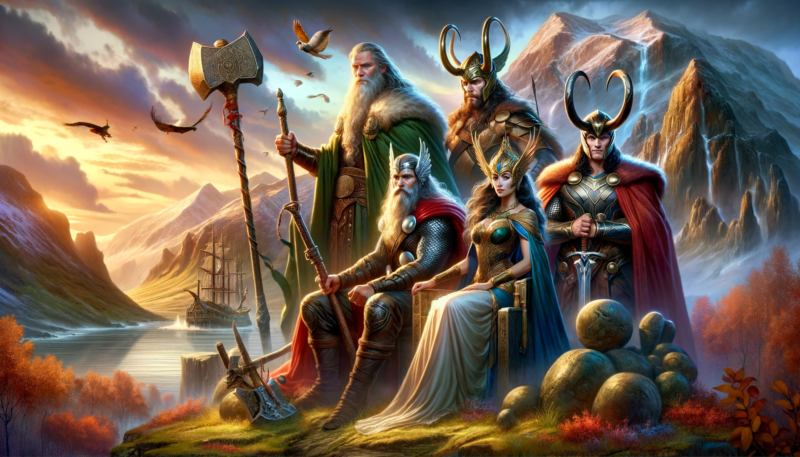Norse Mythology, a cornerstone of ancient Scandinavian culture, is rich with tales of gods, goddesses, and mythical beings. The Norse pantheon consists of diverse deities, each symbolizing various aspects of life, nature, and the cosmos. In this article, we’ll explore these captivating figures and the roles they played in Norse lore.
The Chief God – Odin
Wisdom and War
Odin, the Allfather, is the chief god in Norse mythology. Known for his wisdom, he is also associated with war, poetry, and magic. Odin’s quests for knowledge included sacrificing his eye for a sip from the well of wisdom.
The Valhalla and the Valkyries
Odin rules over Valhalla, the hall of the slain warriors, where the Valkyries, warrior maidens, bring the souls of warriors who died bravely in battle.
Thor – The Thunder God
Mjölnir and Might
Thor, the son of Odin, is the god of thunder, wielding the mighty hammer Mjölnir. He is a protector of humanity, battling giants and monsters to uphold the cosmic order.
The Defender of Asgard
Thor’s feats include battling the World Serpent, Jörmungandr, and his role as a defender of Asgard, the realm of the gods.
Freyja – The Goddess of Love and War
Duality of Nature
Freyja, a member of the Vanir tribe of gods, symbolizes love, beauty, fertility, and also war. Her duality reflects the multifaceted nature of the gods in Norse mythology.
The Brísingamen and Her Chariot
Freyja owns the precious necklace Brísingamen and rides a chariot pulled by cats. She also presides over Fólkvangr, a field where half of those who die in combat go, the other half going to Valhalla.
Loki – The Trickster God
Mischief and Complexity
Loki, known for his cunning and trickery, is a complex figure in Norse mythology. While he is not purely evil, his mischief often causes trouble for gods and mortals alike.
The Shape-Shifter
Loki’s ability to shape-shift leads to various adventures and misadventures, including his role in the death of the god Baldr, leading to the events of Ragnarök.
Ragnarök – The End and Rebirth
The Twilight of the Gods
Ragnarök, often referred to as the “Twilight of the Gods,” is the prophecy of the end of the world in Norse mythology. It’s a series of cataclysmic events, including a great battle, leading to the death of many gods.
A Cycle of Renewal
Ragnarök is not just an end but also a rebirth. It represents the cyclical nature of Norse mythology, where the end of one world leads to the birth of a new one.
Norse mythology offers a window into the ancient Nordic worldview, where gods and goddesses represent the forces of nature and human life. Their tales, filled with heroism, tragedy, and wisdom, continue to fascinate and inspire, echoing the ancient Norse belief in the power and mystery of the universe.
